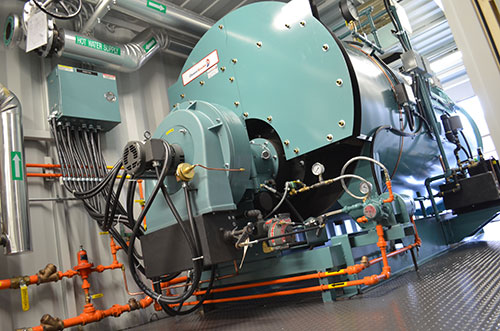As boilers age, they can become less efficient, causing an increase in fuel costs. The main cause of energy inefficiency is system heat loss. Here are several ways to reclaim the heat loss in an effort to reduce facility operating costs:
Conduct an annual boiler maintenance – Maintaining a boiler according to manufacturer recommendations is the simplest way to ensure it will continue to run efficiently.
Proper water treatment – Check that the boiler system water is treated properly. Particulates clog up internal boiler tubes, and over time the system loses its heat transfer ability.
Install a high-turndown burner – Increasing the burner turndown rate will increase energy savings and reduce maintenance. Energy savings increases when on-off cycles are reduced.
Add VSD controls – Installing variable speed drives (VSDs) on boiler feed or deaerator pumps allows an operator to fine-tune the system to run at optimal conditions, while saving energy.
Incorporate parallel positioning – Adding parallel positioning to a boiler enables it to run at its most capable efficiency point. Parallel positioning uses dedicated actuators for the fuel and air valves.
Include O2 trim – Another way to maintain peak efficiency is to add an oxygen sensor/transmitter in the exhaust gas.
Integrate lead/lag – Lead/lag sequences the operation of multiple boilers, matching system load. It also enables boilers to operate in sync with fluctuating steam loads, reducing the possibility of process failure and needless boiler cycling.
Incorporate an economizer – An economizer transfers energy from the boiler exhaust gas to the boiler feedwater, which would normally be lost out the stack. On average, a standard economizer increases boiler system efficiency by 3 percent. Add a condensing economizer to achieve up to 8 percent efficiency.
Learn more at cleaverbrooks.com

